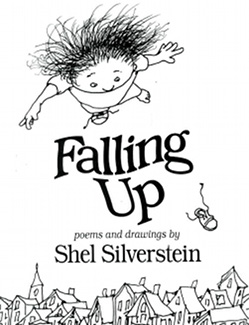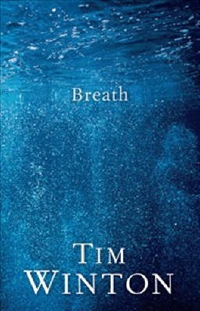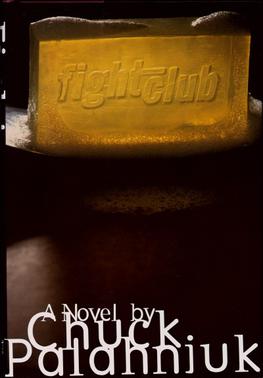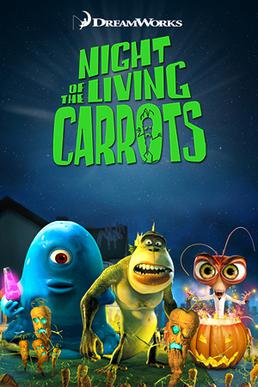
"The Black Cat" is a short story by American writer Edgar Allan Poe. It was first published in the August 19, 1843, edition of The Saturday Evening Post. In the story, an unnamed narrator has a strong affection for pets until he perversely turns to abusing them. His favorite, a pet black cat, bites him one night and the narrator punishes it by cutting its eye out and then hanging it from a tree. The home burns down but one remaining wall shows a burned outline of a cat hanging from a noose. He soon finds another black cat, similar to the first except for a white mark on its chest, but he develops a hatred for it as well. He attempts to kill the cat with an axe but his wife stops him; instead, the narrator murders his wife. He conceals the body behind a brick wall in his basement. The police soon come and, after the narrator's tapping on the wall is met with a shrieking sound, they find not only the wife's corpse but also the black cat that had been accidentally walled in with the body and alerted them with its cry.

Charles Michael "Chuck" Palahniuk is an American novelist who describes his work as transgressional fiction. He has published 19 novels, three nonfiction books, two graphic novels, and two adult coloring books, as well as several short stories. His first published novel was Fight Club, which was adapted into a film of the same title.

Portnoy's Complaint is a 1969 American novel by Philip Roth. Its success turned Roth into a major celebrity, sparking a storm of controversy over its explicit and candid treatment of sexuality, including detailed depictions of masturbation using various props including a piece of liver. The novel tells the humorous monologue of "a lust-ridden, mother-addicted young Jewish bachelor," who confesses to his psychoanalyst in "intimate, shameful detail, and coarse, abusive language."
Gut, GUT or guts may refer to:

"The Tell-Tale Heart" is a short story by American writer Edgar Allan Poe, first published in 1843. It is told by an unnamed narrator who endeavors to convince the reader of the narrator's sanity while simultaneously describing a murder the narrator committed. The victim was an old man with a filmy pale blue "vulture-eye", as the narrator calls it. The narrator emphasizes the careful calculation of the murder, attempting the perfect crime, complete with dismembering the body in the bathtub and hiding it under the floorboards. Ultimately, the narrator's actions result in hearing a thumping sound, which the narrator interprets as the dead man's beating heart.

Louis Dearborn L'Amour was an American novelist and short story writer. His books consisted primarily of Western novels, though he called his work "frontier stories". His most widely known Western fiction works include Last of the Breed, Hondo, Shalako, and the Sackett series. L'Amour also wrote historical fiction, science fiction, non-fiction (Frontier), and poetry and short-story collections. Many of his stories were made into films. His books remain popular and most have gone through multiple printings. At the time of his death, almost all of his 105 existing works were still in print, and he was "one of the world's most popular writers".

Invisible Monsters is a novel by American writer Chuck Palahniuk, published in 1999. It is his third novel to be published, though it was his second written novel. The novel was originally supposed to be Palahniuk's first novel to be published, but it was rejected by the publisher for being too disturbing. After the success of his novel Fight Club, Invisible Monsters was given a second chance, and a revised version of it was published. The first edition was released in paperback in 1999, and on June 11, 2012, it was published in hardcover, in a revised edition titled Invisible Monsters Remix (ISBN 978-0393083521).

"I Have No Mouth, and I Must Scream" is a post-apocalyptic science fiction short story by American writer Harlan Ellison. It was first published in the March 1967 issue of IF: Worlds of Science Fiction.

Sputnik Sweetheart is a novel by Haruki Murakami, published in Japan, by Kodansha, in 1999. An English translation by Philip Gabriel was then published in 2001.
Erotic asphyxiation is the intentional restriction of oxygen to the brain for the purposes of sexual arousal. The term autoerotic asphyxiation is used when the act is done by a person to themself. Colloquially, a person engaging in the activity is sometimes called a gasper. Erotic asphyxiation can lead to accidental death due to asphyxia.

Our Lady of the Flowers (Notre-Dame-des-Fleurs) is the debut novel of French writer Jean Genet, first published in 1943. The free-flowing, poetic novel is a largely autobiographical account of a man's journey through the Parisian underworld. The characters are drawn after their real-life counterparts, who are mostly homosexuals living on the fringes of society.

Falling Up is a 1996 poetry collection primarily for children written and illustrated by Shel Silverstein and published by HarperCollins. It is the third poetry collection published by Silverstein, following Where the Sidewalk Ends (1974) and A Light in the Attic (1981), and the final one to be published during his lifetime, as he died just three years after its release. Falling Up was the recipient of the Booklist Editors' Award in 1996.. In 2015, a special edition of the book was published, with 12 new poems.
Show, don't tell is a narrative technique used in various kinds of texts to allow the reader to experience the story through actions, words, subtext, thoughts, senses, and feelings rather than through the author's exposition, summarization, and description. It avoids adjectives describing the author's analysis and instead describes the scene in such a way that readers can draw their own conclusions. The technique applies equally to nonfiction and all forms of fiction, literature including haiku and Imagist poetry in particular, speech, movie making, and playwriting.

Metamorphoses is a play by the American playwright and director Mary Zimmerman, adapted from the classic Ovid poem Metamorphoses. The play premiered in 1996 as Six Myths at Northwestern University and later the Lookingglass Theatre Company in Chicago. The play opened off-Broadway in October 2001 at the Second Stage Theatre. It transferred to Broadway on 21 February 2002 at the Circle in the Square Theatre produced by Roy Gabay and Robyn Goodman. That year it won several Tony Awards.

Breath is the twentieth book and eighth novel by Australian author Tim Winton. His first novel in seven years, it was published in 2008, in Australia, New Zealand, the UK, the US, Canada, the Netherlands, and Germany.

Fight Club is a 1996 novel by Chuck Palahniuk. It follows the experiences of an unnamed protagonist struggling with insomnia. The protagonist finds relief by impersonating a seriously ill person in several support groups, after his doctor remarks that insomnia is not "real suffering" and that he should find out what it is really like to suffer. The protagonist then meets a mysterious man named Tyler Durden and establishes an underground fighting club as radical psychotherapy.

Night of the Living Carrots is a 2011 American animated short film produced by DreamWorks Animation and based on the film Monsters vs. Aliens. A sequel to the 2009 short, Monsters vs. Aliens: Mutant Pumpkins from Outer Space, the short follows the monster team taking on a mutated carrot army that can mind control others. Dr. Cockroach determines that the only way to defeat them and free their victims is for B.O.B. to eat all of the carrots.

Drown is the semi-autobiographical, debut short story collection from Dominican-American author Junot Díaz that address the trials of Dominican immigrants as they attempt to find some semblance of the American Dream after immigrating to America. The stories are set in the context of 1980s America, and are narrated by an adult who is looking back at his childhood. Drown was published by Riverhead Books in 1996.

Make Something Up: Stories You Can't Unread is a collection of short stories published on May 26, 2015, and written by Chuck Palahniuk.

The Narrator is a fictional character and the protagonist and main antagonist of the 1996 Chuck Palahniuk novel Fight Club, its 1999 film adaptation of the same name, and the comic books Fight Club 2 and Fight Club 3. The character is an insomniac with a split personality, and is depicted as an unnamed everyman during the day, who becomes the chaotic and charismatic Tyler Durden at night during periods of insomnia.

















